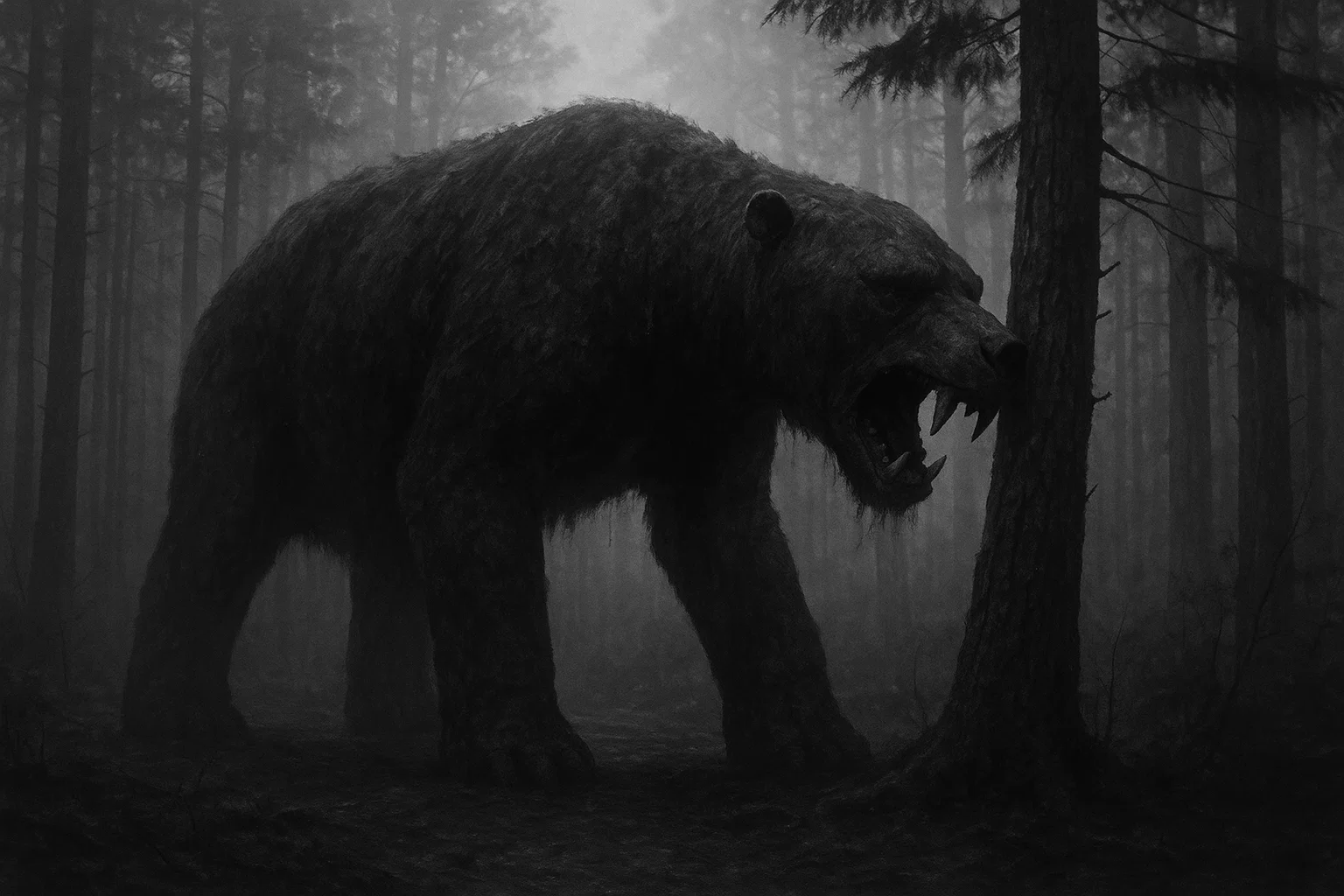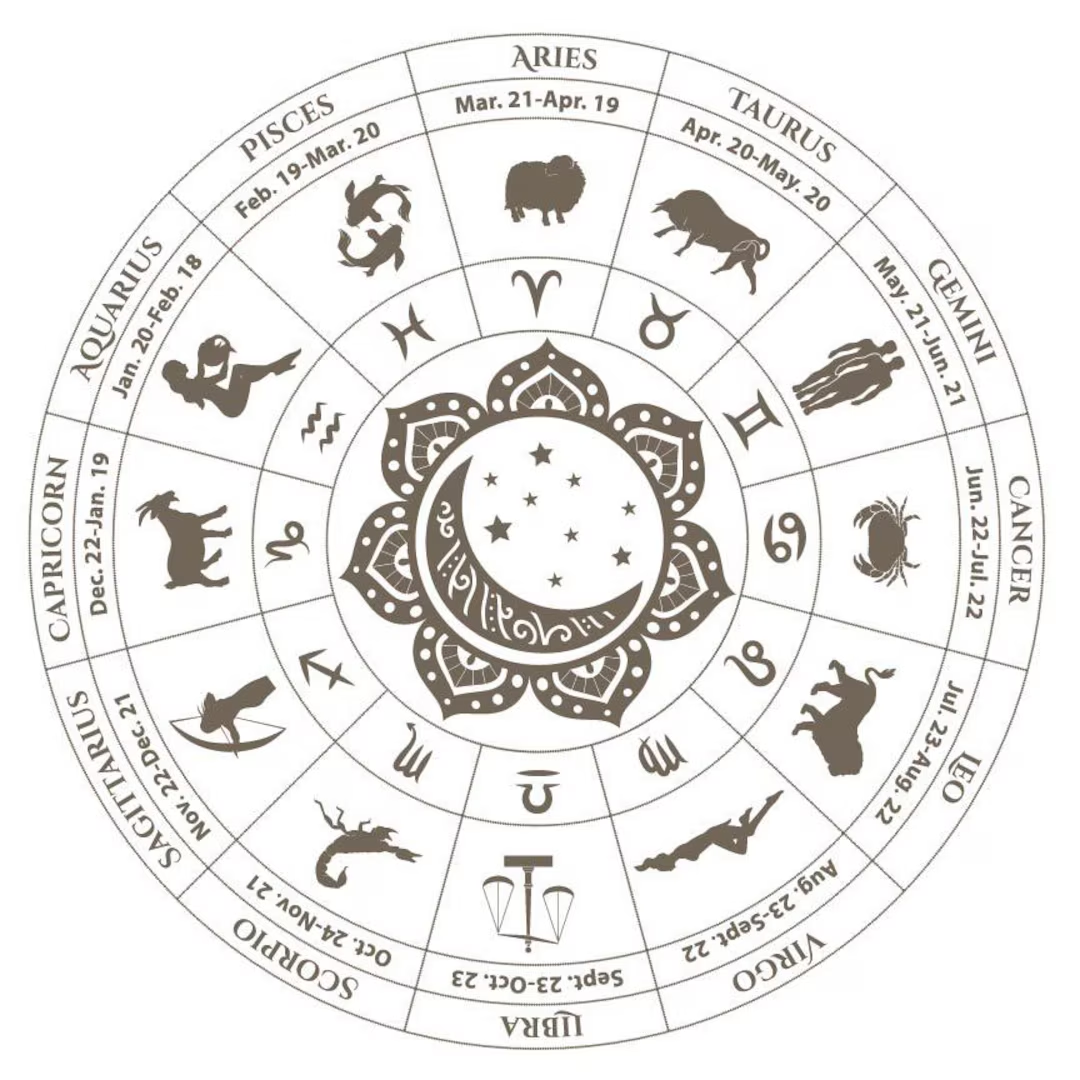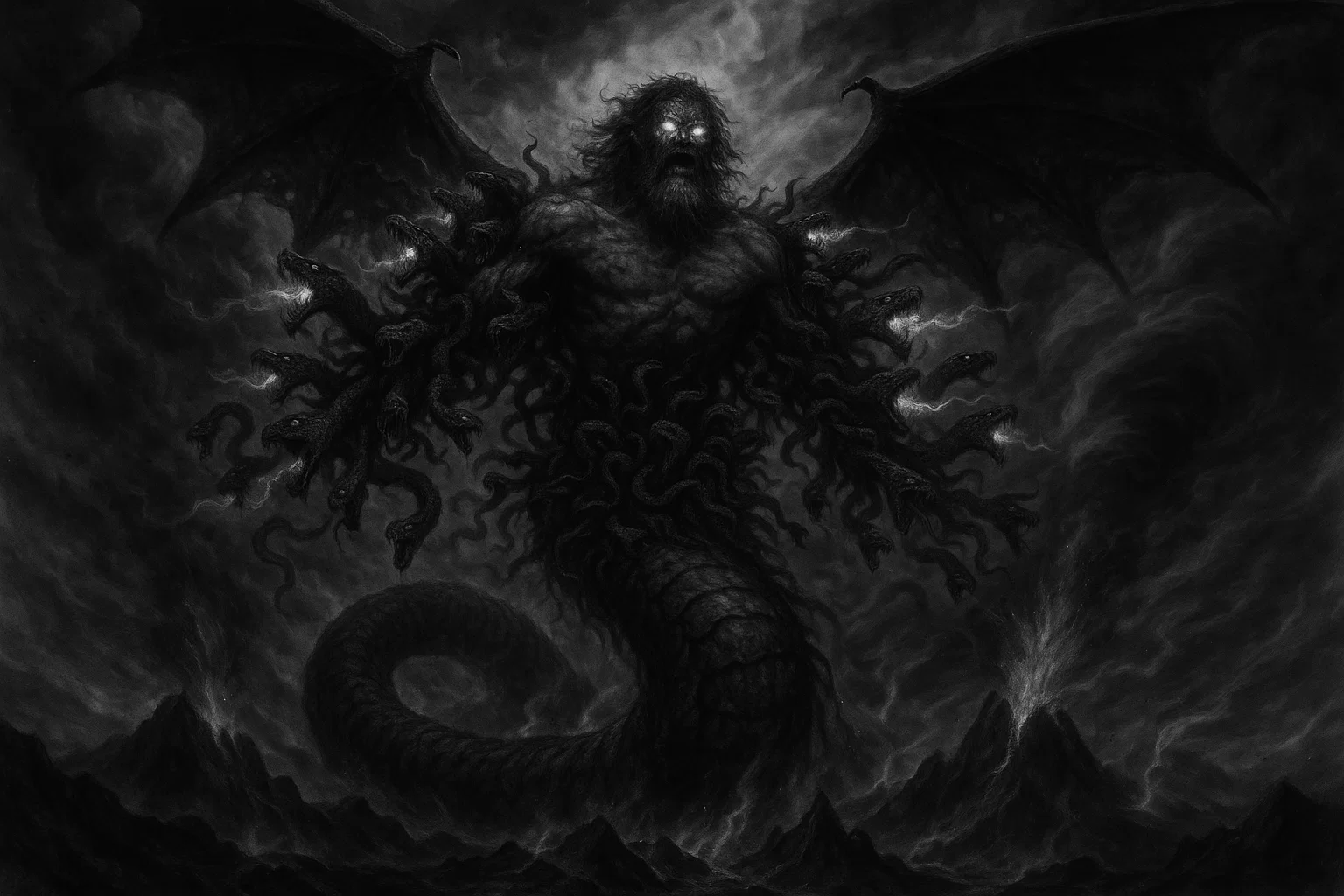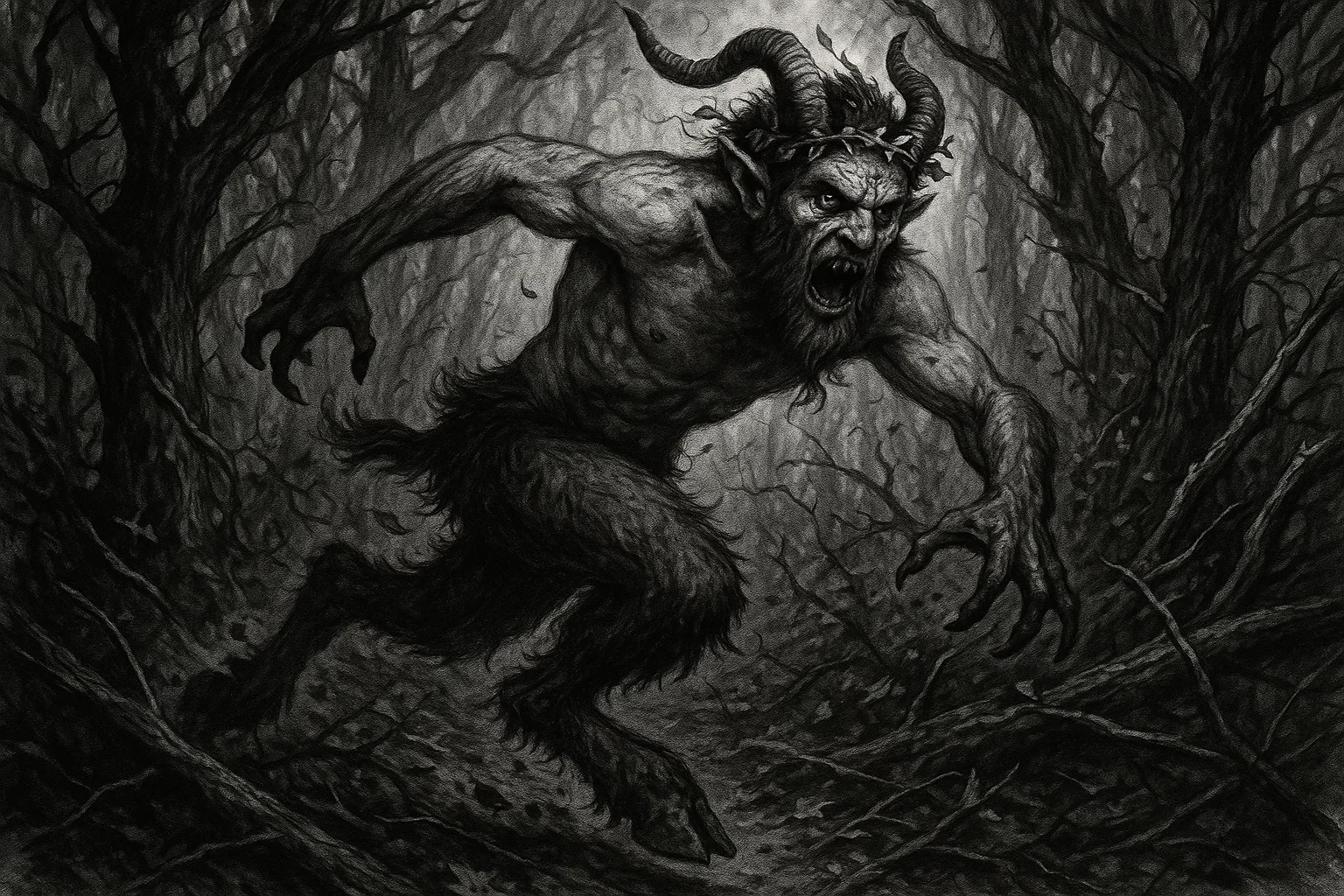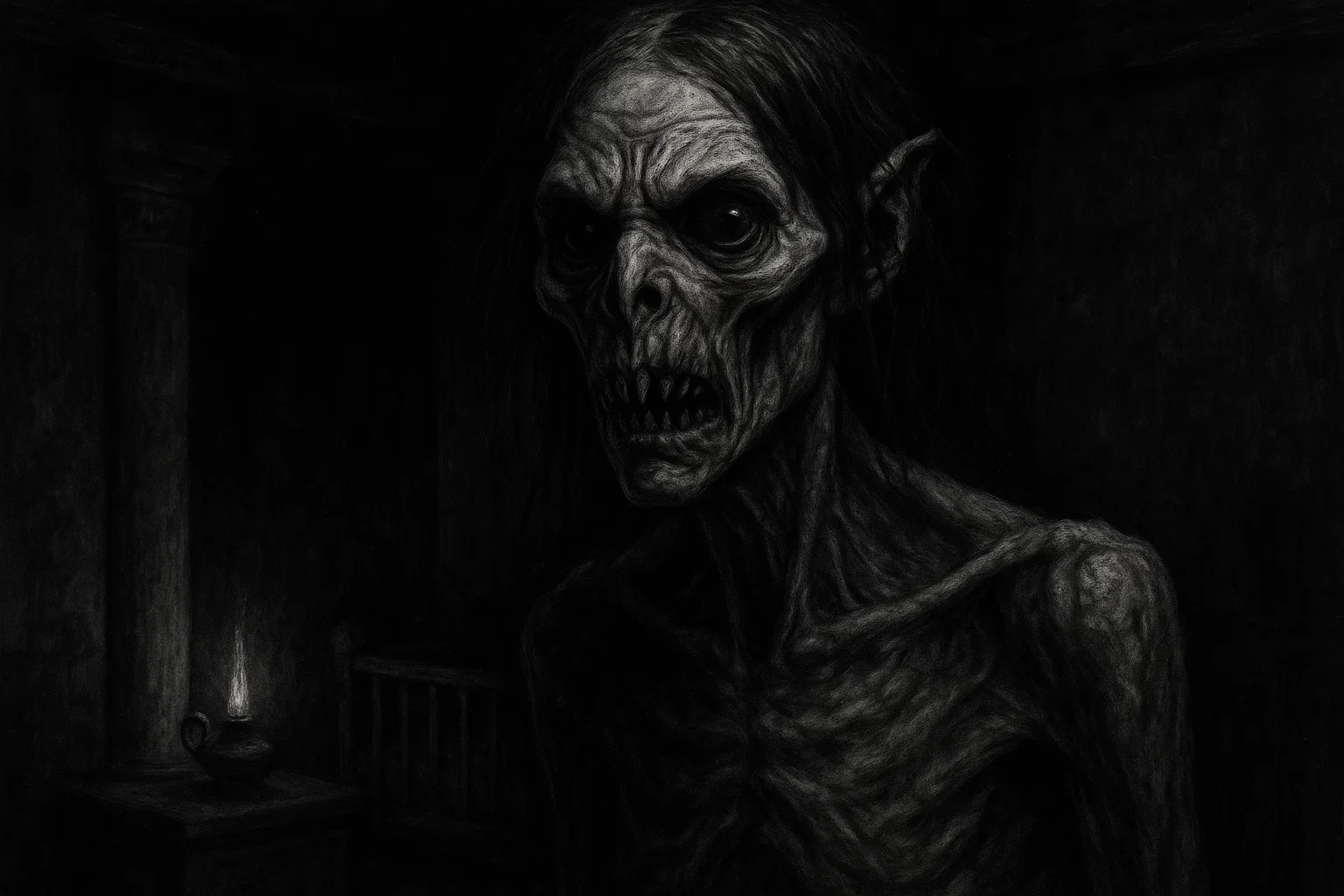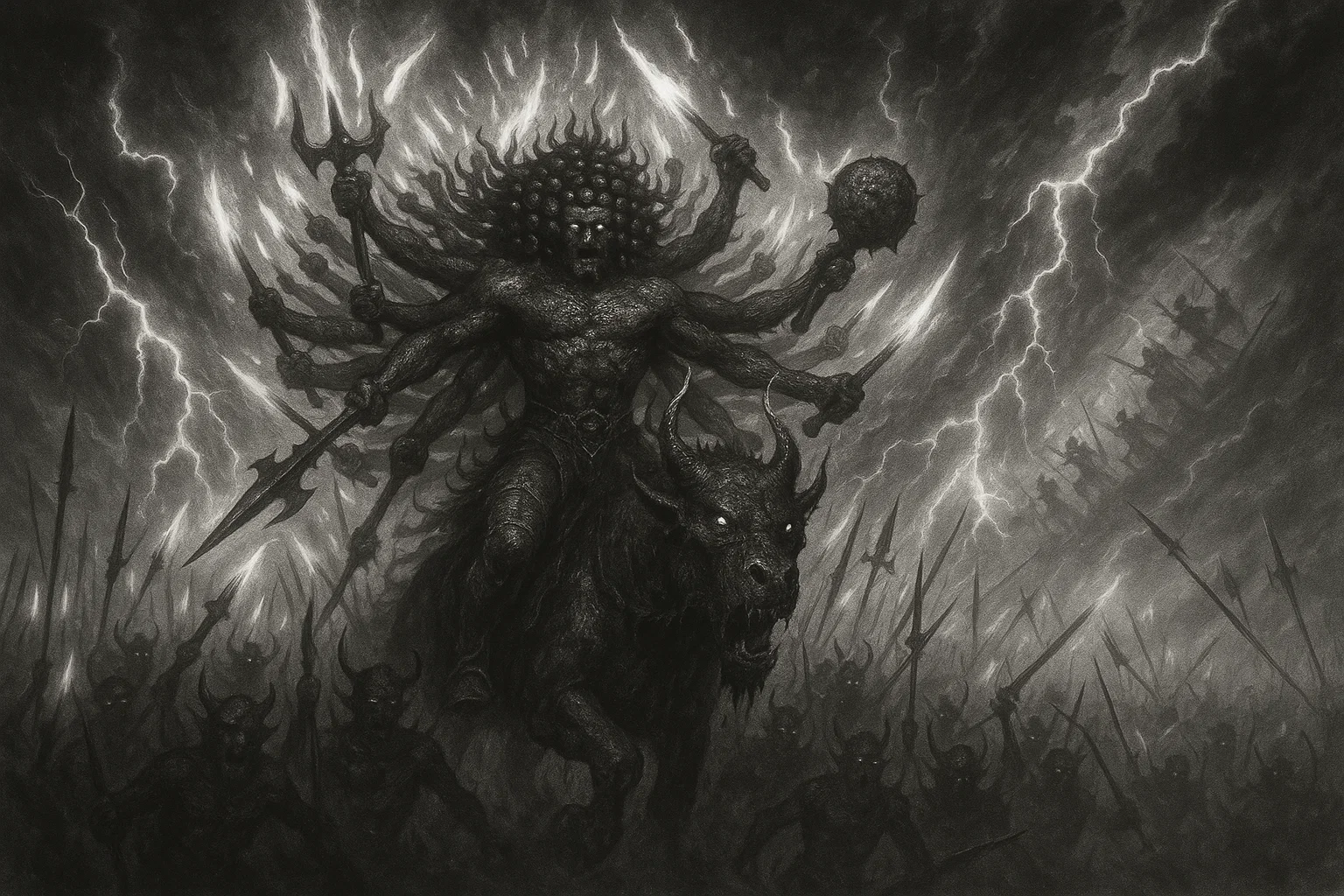The Katshituashku (pronounced something like kah-chee-too-ahshk ) is a strange cryptid in the traditional folklore of numerous Native American nations across the northeastern United States and Canada, particularly among the Penobscot, Cree, and Innu peoples.
Often referred to as the “Stiff-Jointed Bear,” this creature is described as an aggressive, man-eating monster of immense proportions. Given North America’s paleontological history, the stories may have been inspired by the fossilized remains of extinct Ice Age megafauna.
Summary
Overview
| Attribute | Details |
| Name | Katshituashku |
| Aliases | Stiff-Jointed Bear, Misi-Maskwa (Giant Bear), Stiffly Walking Bear, Hairless Bear, Great Naked Bear, Yakwawi’ak, Man-Eater |
| Threat Level | Predatory; categorized in folklore as a man-eating monster, highly dangerous and aggressive |
| Habitat | Dense boreal forests, woods, and riverine environments of the Northeast, including New England and the Subarctic (Maine, Quebec, Labrador) |
| Physical Traits | Monstrous size (elephant-sized); possesses a large head; features fixed, stiff, unbending legs; sometimes described as shaggy or hairless |
| Reported Sightings | Indigenous traditional territories spanning the Eastern Subarctic and New England (e.g., Penobscot River, Cree/Innu regions) |
| First Documented Sighting | Legends date to the pre-contact era; stories reflect possible cultural memory dating back to the late Pleistocene epoch (extinction of mastodons) |
| Species Classification | Mythological Entity; Speculative: Giant terrestrial mammal (Ursid or non-ursid megafauna) |
| Type | Terrestrial, nocturnal, mythological monster |
| Behavior & Traits | Man-eating carnivore; highly elusive; must lean on trees to rest as it cannot rise once lying down; features prominently in cautionary tales |
| Evidence | Persistent oral traditions, extensive cultural memory, documented academic folklore studies |
| Possible Explanations | Misidentification of Mastodon or Woolly Mammoth skeletal remains; exaggeration of giant prehistoric bears; purely symbolic representations |
| Status | Ongoing mystery (folklore); regarded as a primary figure in several Native American mythologies |
Who or What Is the Katshituashku?
The Katshituashku is a terrifying monster in the folklore of several North American indigenous nations, including the Penobscot Nation (part of the Wabanaki Confederacy in Maine) and the Cree and Innu First Nations, whose ancestral territories span the Eastern Subarctic in what is now Quebec and Labrador.
The name itself is highly descriptive, highlighting the monster’s key feature: Katshituashku literally translates as “stiff-jointed bear” or “stiffly walking bear”. Another alternative name used by some groups, Misi-Maskwa, simply means “giant bear”.
This creature is not isolated within a single culture; it is part of a broader cycle of legends concerning the “Stiff-Legged Bear” or “Big Man-Eater” found across numerous Algonquian and Iroquoian cultures. Related entities include the Yakwawi’ak among the Lenape and Shawnee, and the Naked Bear among the Iroquois.
The consistency of the central, unusual trait—the stiffness of the legs—is notable. This characteristic is preserved not just in one tribal tradition but across multiple distinct linguistic and geographical groups, including the Penobscot, Cree, and Iroquois variants.
This shared, specific detail suggests that the stories did not arise solely from generalized fear, but rather from a common, distinct physical source of inspiration found throughout these regions, such as the unusual skeletal remains of an extinct animal.
Your Personalized, Hyper Accurate Moon & Astrology Reading
Limited time offer: Get your FREE, fully personalized Moon & Astrology Reading that takes astrology to a whole new level. Discover the secret depths of your personality, relationships, and true purpose in life.
What Does the Katshituashku Look Like?
Descriptions of the Katshituashku consistently portray it as a creature of truly immense scale.
It is reported as being a monstrous, elephant-sized bear. It is noted for its powerful build, allegedly capable of pushing over large trees, similar to modern elephants. A critical feature mentioned is its disproportionately large head.
Regarding its coat, the creature is sometimes described as shaggy. Still, other traditions refer to it as the Hairless Bear or the Great Naked Bear. Its nature as a ferocious predator is emphasized by its formidable dental structure; some myths state its teeth are long enough to crunch through several hunters at once.
However, the most definitive and unusual physical trait is its stiff-legged gait. The creature’s legs are fixed and cannot bend at the joints, making its walk stiff and deliberate.
This physical constraint dictates its behavior: the Katshituashku must rest by leaning against a large, sturdy tree. Narratives explain that if the creature were to lie completely on the ground, its inflexible legs would render it physically unable to stand back up.
This specific, biomechanical observation is significant because it does not align with the anatomy of any known extant bear species, whose locomotion relies on flexible, bent limbs. The detail is highly specific to the way proboscideans (elephants, mammoths, and mastodons) move.
You May Also Like: 15 Most Terrifying Haunted Hotels in Alabama
Habitat
The legendary lands associated with the Katshituashku stretch across a vast, forested area in Eastern North America. This region is deeply connected to the ancestral lands of Native American nations, who share stories of this creature. It runs from the thick woods of New England all the way north into the rugged landscapes of Eastern Canada.
The Penobscot Nation originally lived around the Penobscot River in present-day Maine. This area is known for its rich mixed forests, numerous lakes, and extensive river systems.
Further to the north and west, the Cree and Innu people, who also have stories about a creature they call Katcheetohuskw, inhabit the Eastern Subarctic regions of Quebec and Labrador. Their territory is defined by remote, wild forests and the edges of tundra, providing a hidden refuge for large animals.
The legendary creature is closely tied to this forest environment. One of its most unusual traits is that it cannot get up once it lies down, which means it relies on strong trees to help it stand when it rests. This unique aspect emphasizes how well the creature is connected to the deep wilderness.
Historically, these lands were also home to American Mastodons during the last Ice Age, linking the creature’s myths to ancient history.
Katshituashku Sightings
In the case of the Katshituashku, “sightings” are categorized as historical narrative documentation derived from ancient oral tradition, rather than modern physical encounters involving photographs or footprint casts.
| Date | Place | Witness Details | Description | Reliability |
| Pre-Contact Era | Innu Ancestral Lands (Quebec/Labrador) | Innu oral traditions, Tshakapesh (Culture Hero) | Tshakapesh avenges his family by slaying the gigantic Katcheetohuskw (Elephant Monster), demonstrating human dominance over primeval chaos | High: Core foundational myth detailing a significant cultural conflict |
| Pre-Contact Era | Penobscot Territory (Maine) | Penobscot storytellers and elders | Stories detailing the man-eating stiff-legged bear, serving as a reminder to be vigilant of dangers and discouraging children from wandering | High: Consistent narrative used for didactic and moral instruction |
| Unspecified | Algonquian Territories | Multiple Native American storytellers | The narrative constraint detailing the creature’s need to lean on trees for rest, due to its unbending legs. | High: This consistent physical detail strengthens the shared tradition |
| Pre-Contact Era | Lenape/Shawnee Territories | Lenape Indian legends | Tales of the Yakwawiak, the stiff-legged monster, with specific storytellers linking the creature directly to mastodons. | High: Direct linkage to paleontological source material |
Awaken XT is unlike anything you’ve ever tried before…
…it’s based off a closely guarded formula that’s said to be able to supercharge your pineal gland and help you access your untapped inner power. With it’s unique blend of extremely hard to source ingredients, Awaken XT helps support the healthy functioning of your pineal gland, as well as your other organs in your body.
The Saga of Tshakapesh and the Elephant Monster (Innu Mythology)
The Innu (or Montagnais) nation maintains a detailed myth cycle featuring the culture hero Tshakapesh (Tshikapish). The foundational tale of Tshakapesh and the Elephant Monster (known as Katcheetohuskw or Katshituashku) describes a monumental conflict between the monstrous beast and the human world.
The narrative begins when the monstrous Katshituashku kills Tshakapesh’s parents, leaving the hero as an infant, saved and raised by his sister, hidden in a container.
Tshakapesh grows rapidly and is determined to avenge his family’s death. His preparation for the battle symbolizes the immense power required to face the giant bear.
He practices hunting, graduating from small, ordinary weapons to a powerful bow crafted from an entire tree and arrows made from large tree limbs. Tshakapesh successfully hunts and slays the Elephant Monster.
In a detail that emphasizes the monster’s colossal, non-ursine size, the hero later uses the creature’s immense ears as mattresses following its defeat.
You May Also Like: The Loveland Frog Mystery: Real Cryptid or Local Hoax?
The Stiff-Legged Bear in Penobscot Lore
For the Penobscot Nation, the Katshituashku legend served a crucial didactic function, acting as a powerful deterrent against reckless behavior in the unforgiving wilderness.
The stories were used specifically to impress upon children and younger tribe members the need for strict adherence to safety protocols, discouraging them from venturing deep into the vast, dangerous forest alone.
The mythological details of the creature—elephant-sized, with teeth capable of crushing multiple hunters at once—maximized the perceived threat, making the cautionary tale highly effective. The legend reinforced critical tribal survival instincts and promoted constant vigilance against real or perceived dangers that lurked just beyond the settlements.
Evidence & Investigations
Unlike well-known cryptids like Bigfoot, which continue to spark modern sightings and evidence, such as photographs or footprints, there has been little recent investigation into the Katshituashku. Most researchers treat this bear more as part of history and mythology rather than as a creature that might still exist today.
Most of the support for looking into this creature comes from studies in anthropology, paleontology, and folklore. Anthropologists, for example, have examined legends from the Penobscot people, finding interesting similarities between the bear described in their myths and African elephants, even though these communities had no contact with actual African elephants.
This suggests that the image of the bear might actually have originated from the large bones of prehistoric animals like mastodons or mammoths, which once roamed the earth.
What makes these legends intriguing is their persistence over time. They span across various tribes, including the Cree and Naskapi, and it’s clear that these communities have maintained the stories for generations.
One specific detail that stands out is the bear’s unusual, stiff walking style, which helps keep the story accurate throughout the ages. This indicates that ancient societies had a strong understanding of their environment, possibly transforming encounters with the remains of long-extinct animals into compelling legends that still resonate today.
Theories
The Katshituashku is considered one of the most compelling case studies in North American folklore, where mythology appears to directly reflect prehistoric life.
The Mastodon Hypothesis
There’s a theory that the legend of the Stiff-Legged Bear arose when indigenous peoples discovered the enormous bones of ancient animals like Woolly Mammoths and American Mastodons, which lived in North America until about 10,000 years ago.
When these bones were discovered—possibly during travel or construction—the people didn’t know what they were, so they tried to explain them by thinking of the largest predator they knew: the bear.
Interestingly, the legend’s details closely match the characteristics of mastodons. First, the legendary creature is described as enormous, comparable to a mastodon.
Second, it’s said to have a large head, which also aligns with the large skulls of these ancient animals. Most importantly, the legend mentions that the creature had “stiff legs.” This description likely reflects the way mastodon bones are structured; their legs are straight and strong, built to carry heavy loads without bending much at the joints.
Early people who saw these straight bones might have thought that this giant animal couldn’t bend its legs like a regular bear could.
You May Also Like: Who or What Is the Owlman of Mawnan Church?
The Carnivore Paradox
The Katshituashku is a fascinating creature that’s often described as a fearsome man-eater. This poses an interesting problem because its physical traits seem to be based on mastodons, which were huge plant-eating animals and not aggressive.
Folklortists suggest that this mix-up may be due to cultural storytelling. The size and certain features of the Katshituashku could have been inspired by mastodon fossils. Still, its fierce behavior was likely shaped by the local culture’s need for a scary monster to warn people about the dangers of the wilderness.
Since bears were the most well-known and powerful predators in that region, the results show a combination of mastodon features mixed with the hunting nature of bears.
This creative blending helps explain why the Katshituashku is often not described with a trunk like a mastodon’s—when re-imagining this creature as a bear-like monster, people probably overlooked the mastodon’s unique features in favor of what they knew about bears.
Purely Symbolic Warning or Exaggerated Bear
An alternative, less specific theory suggests that the Katshituashku is purely a mythological archetype of a formidable wild giant, entirely independent of any particular fossil evidence.
Proponents of this view argue that creating giant versions of known animals is a common trend in global mythology. This theory suggests the legend may simply be an exaggeration of exceptionally large bears that once roamed the area, such as the gigantic brown bears found in coastal North America, or perhaps even a cultural memory of the extinct Giant Short-Faced Bear.
However, this explanation struggles to account for the unique, highly specific detail of the stiff legs. Every known bear species, extinct or extant, possesses flexible limb joints necessary for climbing and maneuvering in the woods. The legs’ stiffness is a biologically accurate detail for a proboscidean skeleton, but biologically inaccurate for any known ursid.
Because this specific, unusual characteristic is preserved across multiple tribal traditions, it remains the central piece of information that heavily favors the paleontological hypothesis over the idea of a simple mythological exaggeration.
Comparison with Other Similar Cryptids
The Katshituashku belongs to a category of giant, terrestrial cryptids, often associated with ursine or hominid traits, or linked to extinct megafauna.
| Cryptid | Associated Culture/Region | Primary Description | Size Estimate |
| Yakwawi’ak | Shawnee/Lenape (Eastern US) | Gigantic, fierce bear monster, a regional variant of the Stiff-Legged Bear cycle | Equivalent to an elephant or mastodon |
| Naked Bear | Iroquois (New York/Great Lakes) | A monstrous, hairless, man-eating bear with stiff legs | Significantly larger than black bears; gigantic |
| Kamchatka Giant Bear | Kamchatka Peninsula (Russia) | A real or exaggerated subspecies of brown bear noted for its exceptional size and massive paw prints | Up to 6 feet at the shoulder; prints a full square foot |
| Bigfoot (Sasquatch) | Pacific Northwest (North America) | Large, bipedal, elusive ape-like hominid covered in dark hair | 6–9 feet tall; very broad shoulders |
| Yeti (Abominable Snowman) | Himalayas (Nepal, Tibet) | Hominid creature said to inhabit high-altitude, cold, snowy mountainous regions | Varies, often described as large and heavily built |
| Skunk Ape | Florida/Southeastern US | A large, foul-smelling, bipedal ape-like creature inhabiting swamps | Approx. 6–7 feet tall |
| Nandi Bear | Kenya (Africa) | Large, aggressive carnivore, possibly a giant hyena or surviving prehistoric beast | Approximately the size of a large bear |
| Chenoo | Wabanaki (Northeast US) | A giant, cannibalistic human monster whose heart is made of ice | Gigantic humanoid |
| Wendigoo (Wendigo) | Algonquian (Great Lakes/Canada) | A gaunt, towering, malevolent spirit of cannibalism and greed | Varies; incredibly tall and skeletal |
| Amarok | Inuit (Arctic) | A giant, solitary wolf that hunts human beings and often eats them whole | Significantly larger than ordinary wolves |
| Moa (Supposed Survivor) | New Zealand (South Island) | Medium to large flightless birds, potentially surviving in deep wilderness | Varies; largest species up to 12 feet tall |
You May Also Like: Piasa Bird: The Terrifying Cryptid That Devoured Men
Is the Katshituashku Real?
From a biological or modern cryptozoological standpoint, there is no credible evidence suggesting that an elephant-sized, stiff-legged bear currently inhabits the forests of North America.
The Katshituashku is not considered a verifiable extant cryptid in the same manner as alleged surviving hominids or undiscovered species. The lack of any modern physical evidence or scientific documentation supports the conclusion that the creature does not exist as a living biological organism today.
However, the creature holds a significant, historical form of reality within the context of Native American cultural history. The overwhelming consensus among folklorists, anthropologists, and analysts points to the Katshituashku being a direct cultural memory or interpretation of extinct megafauna—specifically, the discovery of mastodon or mammoth fossils thousands of years ago.
The preservation of anatomical details, particularly the non-ursine trait of the stiff, columnar legs, suggests that the indigenous people of the region retained, through their myths, knowledge of creatures that vanished during the Pleistocene epoch.

